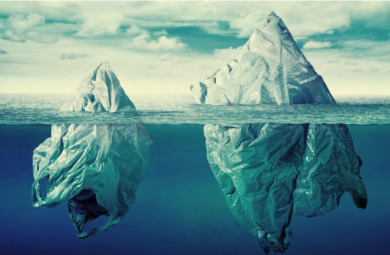King County’s recently completed Environmental Impact Statement (EIS) for “potential” expansion of the Cedar Hills Landfill is yet another example of the County going through the motions but having the conclusion decided well before hand, said Philipp Schmidt-Pathmann, President and CEO of the Institute for Energy and Resource Management (IeRM). “If you look at the timetable the County set out months ago, you will see that the last item is ‘Construction of new landfill area within the Cedar Hills Regional Landfill property.’ There was never any question, regardless of public sentiment or scientific findings.”
Today it is interesting to see that our switch from landfilling to a strong recycling program and waste to energy has had a very positive impact on the reduction of climate damaging greenhouse gas emissions. According to the scientific experts, landfills can leak up to 50% or more of their methane content over their lifetime. Now no methane is emitted from our waste. We also have a much more robust, effective and productive recycling system in place.
The European Union has followed Germany’s example, adopting this environmentally friendly waste policy for all 27 member states. This would also work well for the US.

Increased environmental awareness resulted in new regulations against pollution sources. At this time, as we investigated our practice of landfilling, we recognized some significant environmental problems. Untreated waste contains hazardous substances, such as heavy metals and dangerous chemicals, that can produce landfill gas and toxic leachate. Could we ensure that those substances would be contained in the landfill and not contaminate groundwater, drinking water, or the air, ultimately threatening the health of the people?
Our first attempts were to contain these toxic substances through engineering, such as placing barriers below, above, and at the sides of the landfill, installing collection and treatment systems for gases and leachates, and maintaining inspection and control of those systems. We recognized, however, that those technical systems had to be intact for a very long time, if not forever, because hazardous substances in the waste stream will not disappear or become inert. Moreover, our scientific investigations, calculations, and experience proved that the efficiency of the collection systems was well below their predicted performance.
As a consequence, we had to admit that our landfills merely shifted the problem to future generations, who would become responsible for the dangers to the environment, as well as the costs for remediation and management of closed landfills. What could be done to avoid this? If we could not provide safe solutions through landfill design and engineering, we could pre-treat the waste itself, so that the danger was removed. This meant mineralizing all organics, transforming soluble hazardous substances such as heavy metals and chemicals into non-soluble forms, and separation of certain substances for special treatment.
Today it is interesting to see that our switch from landfilling to a strong recycling program and waste to energy has had a very positive impact on the reduction of climate damaging greenhouse gas emissions. According to the scientific experts, landfills can leak up to 50% or more of their methane content over their lifetime. Now no methane is emitted from our waste. We also have a much more robust, effective and productive recycling system in place.
The European Union has followed Germany’s example, adopting this environmentally friendly waste policy for all 27 member states. This would also work well for the US.

The concerns about long-term landfill management expressed by experts across scientific disciplines like Wanless and Sachs are shared by Nick Lapis, the director of advocacy at Californians Against Waste. “The problem with landfills is that they never go away. You have to manage them in perpetuity, and there isn’t a liner or cap that is warrantied to last for that long,” he says. “And they’re not stable. They move and shrink as their contents decay, and the plastic liners will get brittle and crack as the pressures cause them to fold over on themselves. Sooner or later they will fail, as will the clay liners, and the effects of any failure can be absolutely devastating on the environment.” He adds, “From a financial standpoint the original owner, if [the landfills] were privately owned, is often long gone by the time they fail, so taxpayers will be left on the hook.”
